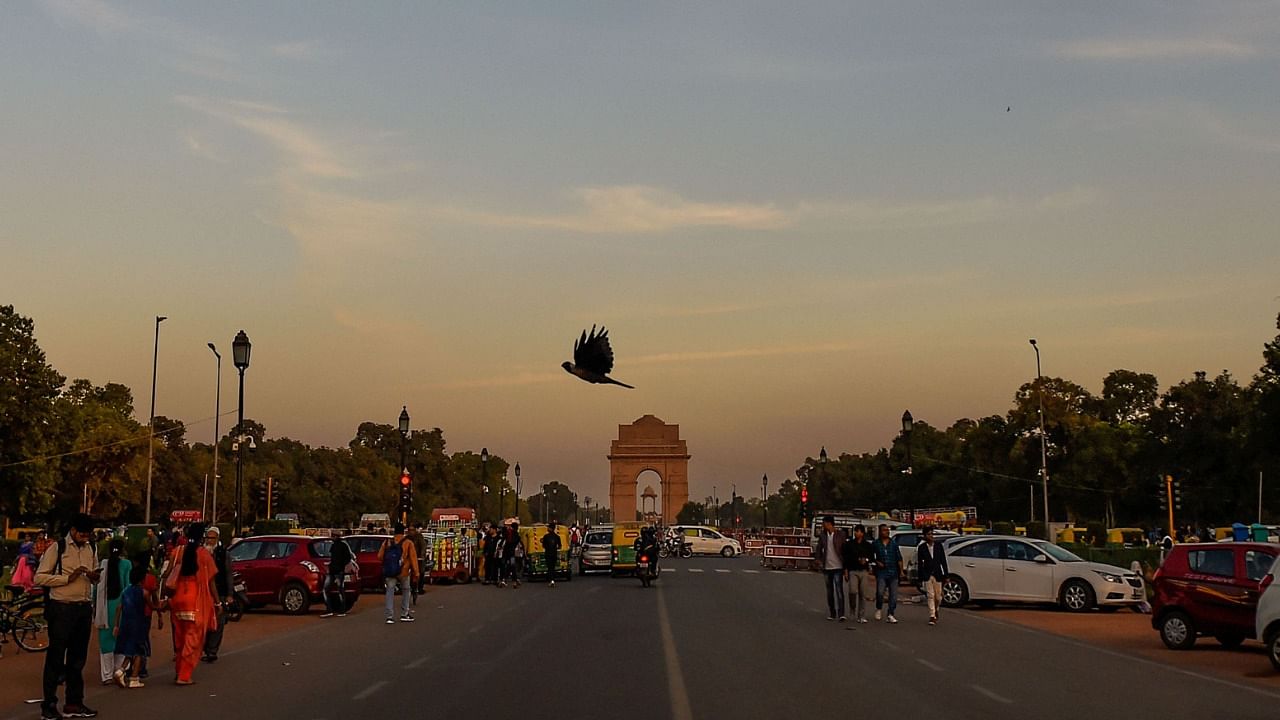
The air quality in Delhi deteriorated to the "poor" category on Wednesday with the number of stubble-burning incidents going up, authorities said.
According to the Ministry of Earth Sciences' forecast body SAFAR, the national capital's Air Quality Index (AQI) was recorded at 222 and it is likely to degrade further over the next two days due to an expected rise in the number of stubble-burning incidents.
"Delhi's AQI is in the poor category. Fire count's share in PM2.5 is 12 per cent. Fire emission from upwind region enhances PM2.5 concentration as winds at transport level are from the northwest region.
"Stubble burning share is likely to increase in the next two days if there is no rain. The overall AQI is likely to further degrade to the higher-end of the poor category for the next three days," it said.
According to the data from the Indian Agricultural Research Institute (IARI), a total of 969 farm fires were recorded in the six regions with Punjab accounting for 788, Haryana for 155, one in Uttar Pradesh, four in Rajasthan and 21 in Madhya Pradesh. No fire was recorded in Delhi.
On October 19, 562 farm fires were recorded collectively in the six regions with Punjab accounting for 496, Haryana for 55, five each in Uttar Pradesh and Rajasthan, and one in Madhya Pradesh. No fire was recorded in Delhi.
On the previous day, 60 farm fires were recorded in the six states, of which Punjab recorded 57 incidents, Haryana one and Rajasthan two. There were no fires in Delhi, Uttar Pradesh and Madhya Pradesh.
However, the IARI said detection of burning events by satellites was hampered due to clouds over eastern Uttar Pradesh and Madhya Pradesh.
A total of 4,768 burning events were detected in the six states between September 1 and October 19, which are distributed as 2,942, 1,082, 625, zero, 34 and 85 in Punjab, Haryana, Uttar Pradesh, Delhi, Rajasthan and Madhya Pradesh respectively.
Overall, the total number of burning events recorded in the six states is 56.7 per cent less than in 2020 till date. Punjab recorded a 65.4-per cent reduction, Haryana recorded a 6.9-per cent reduction, Uttar Pradesh recorded a 25.5-per cent increase, Delhi recorded a 100-per cent reduction, Rajasthan recorded a 88.8-per cent reduction and Madhya Pradesh recorded a 83.7-per cent reduction in the current season as compared to 2020.
Scattered rainfall over north India had significantly brought down pollution in the national capital on Tuesday with the AQI in the "good" category at 82.
Stubble burning in the neighbouring states significantly contributes to the air pollution in Delhi.
The active fire events due to rice residue burning were monitored using satellite remote sensing, following the new "Standard Protocol for Estimation of Crop Residue Burning Fire Events using Satellite Data".
Punjab and Haryana attract attention during the paddy harvesting season in October and November.
Farmers set their fields on fire to quickly clear off the crop residue before cultivating wheat and potato. It is one of the main reasons for the alarming spike in pollution in Delhi-NCR.
Check out latest videos from DH: